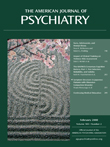Dr. Goldberg Replies
To The Editor: We appreciate the comments by Dr. Rasmussen regarding our recent study of adjunctive antidepressants plus mood stabilizers for bipolar depression with concomitant mania symptoms. However, a few clarifications appear in order.
First, we did not assess discrete switches to frank mania or hypomania because our main goal was to determine whether adjunctive antidepressants were effective for bipolar patients when accompanied by any degree of mania. The observation that such usage worsened mania was a secondary result. We reported those results as worsening Young Mania Rating Scale scores because such dimensional outcomes are more sensitive measures of change than categorical outcomes. Many clinicians feel that mood destabilization only involves discrete “switching” from one affective pole to another, but such a categorical distinction is less meaningful when patients already manifest signs of both poles. In fact, if the “switch” phenomenon were categorical rather than dimensional, then antidepressant-induced “switching” from mixed to pure mania would, by definition, involve merely the retention of mania symptoms alongside reduction of depressive symptoms. This was not seen in our study.
Second, in Table 2, among subjects with no DSM-IV-defined mania symptoms, baseline Young Mania Rating Scale scores were higher in those who were antidepressant-free than antidepressant-treated. One must remember that the Young Mania Rating Scale was designed to assess change in inpatients rather than diagnose mania. It includes many nonspecific symptoms related to agitation and aggression and assigns lower-range scores on individual items for behaviors that are not necessarily pathological (whereas DSM-IV criteria are defined as falling outside the norm). Thus, our results may simply suggest that clinicians avoided antidepressants in those with nonspecific agitation/aggression despite the absence of DSM-IV mania criteria.
Third, as noted in the editorial accompanying our article, the observed significant interaction effect between baseline mania symptoms and antidepressant use that we depicted using a box plot (Figure 3) is complex: the slopes of the lines are different within each subgroup of patients with differing numbers of mania symptoms. Because of these changing relationships, it would have been a misinterpretation of the interaction effect to assume a simple linear relationship between the number of baseline mania symptoms and Young Mania Rating Scale severity score at follow-up. Rather, the interaction effect means that in the presence of any mania symptoms at baseline, Young Mania Rating Scale scores were higher after 3 months when antidepressants were added to mood stabilizers. Furthermore, in Figure 3, it would have been an overinterpretation (in a post hoc stratification within a subgroup analysis) to assert that there was any notable antidepressant-related improvement in mania in those with more than 3 baseline manic symptoms. The changes were not meaningfully different in magnitude between the two groups; their confidence intervals greatly overlapped.
We reiterate that the main finding of our study was the lack of efficacy of antidepressants for the treatment of bipolar depression, in this case when accompanied by mania symptoms. Consistent with findings reported previously from the STEP-BD randomized comparison of mood stabilizers with or without antidepressants for pure bipolar depression, our results contradict assumptions that antidepressants effectively treat bipolar depressive symptoms.



